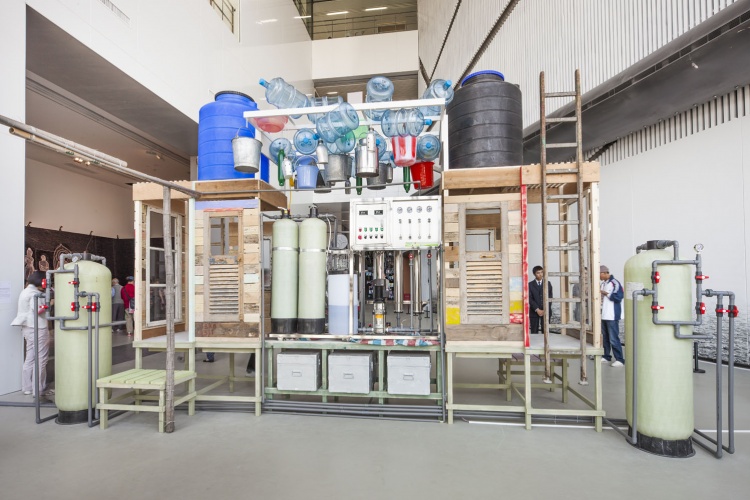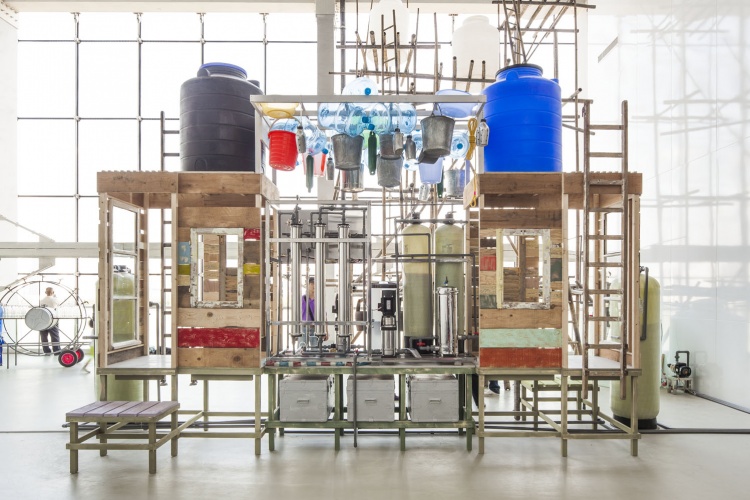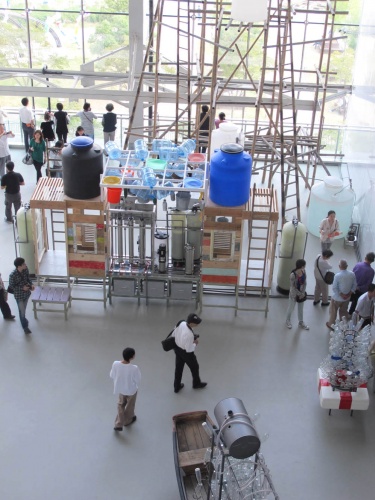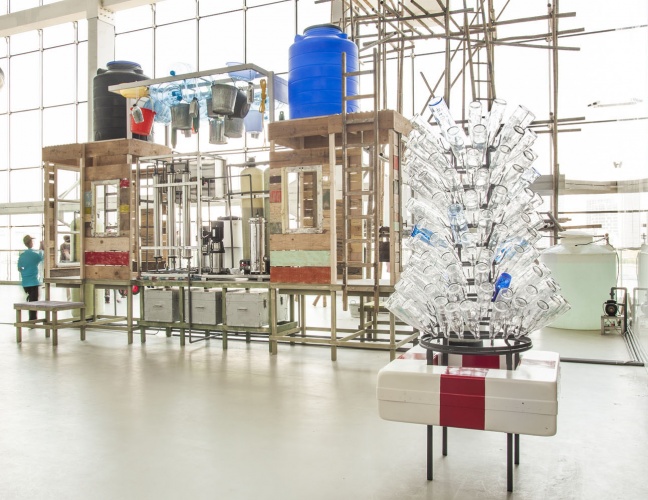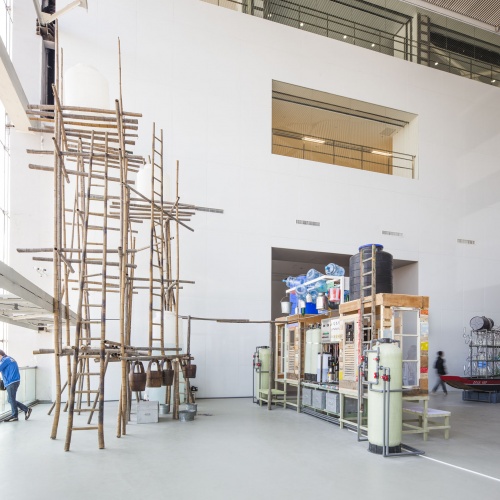OrtaWater - Purification Factory
Date:
2012
Ref:
1310
Materials:
Structure in reclaimed wood, window frames, glass, water purification system, pump, water tanks, pipes, tubes, glass carafes, various water recipients, ladders, gourdes, OrtaWater bottles
Dimensions:
Installation dimensions variable approx. h350 x 150 x 540cm
Exhibition history:
2024 Diriyah Contemporary Art Biennale, Saudi Arabia; 2015 Museum De Lakenhal, Leiden, The Netherlands; 2012 9th Shanghai Biennale, China
Courtesy:
Lucy + Jorge Orta
The long-term meta project OrtaWater addresses the critical issue of water scarcity and highlights the complex challenges related to corporate control over access to clean water. The project features sculptures and objects created by Lucy + Jorge Orta, incorporating fully functioning, low-cost water purification machines, bottling stations, and transportation devices. These installations allow for the direct pumping and filtration of contaminated water from polluted sources. Through their playful and thought-provoking nature, the artworks demonstrate simple purification and distribution possibilities, aiming to raise public awareness about the impact of pollution on water availability.
During a visit to China in 2006, the artists researched water distribution and consumption in rural communities and observed the effects of extensive industrial development on water resources. As part of their commission for the Shanghai Biennial in 2012, they conceptualised the 'OrtaWater Purification Factory', which involved a locally sourced water purification machine and utensils used for water collection in rural China. The factory also featured a towering 5-meter bamboo water tank. This installation pumped water from Shanghai's Huang Pu river, located 20 meters below the city's Power Art Museum.
The 'OrtaWater Purification Factory' was subsequently re-installed in Leiden in 2015. Prior to this, water purification installations were commissioned for the Venice Biennale at the Bevilacqua La Masa Foundation in 2005. During this exhibition, water from the Grand Canal was pumped into the St. Mark's Square gallery through interconnected pipes linked to all the sculptures. The water was then purified, bottled, and distributed to visitors. Likewise, at the Museum Boijmans Van Beuningen in Rotterdam in 2006, the artists used a network of pipes to pump filthy Dutch canal water throughout the historical museum galleries into a large filtration device connected to the sculptures.
